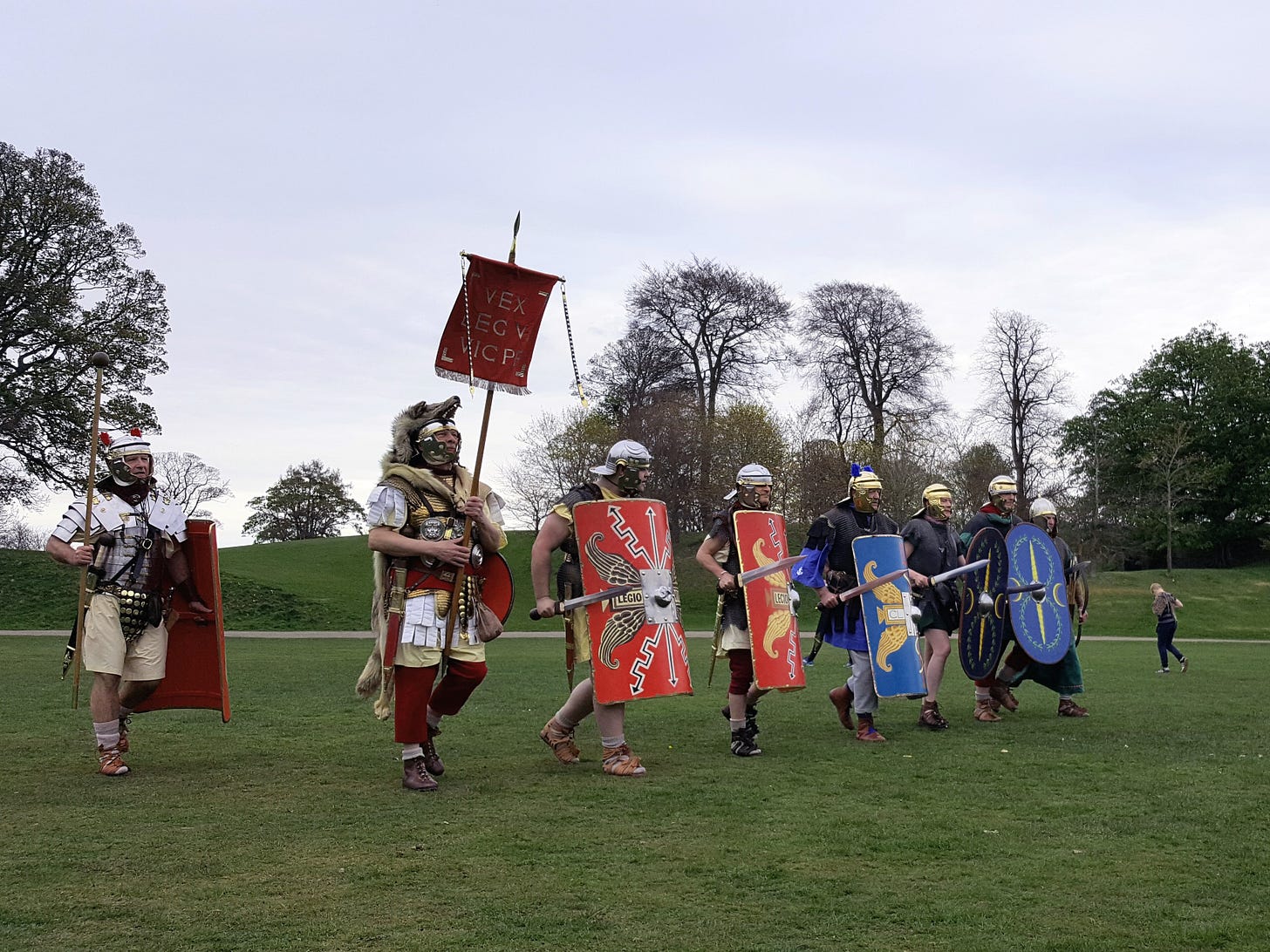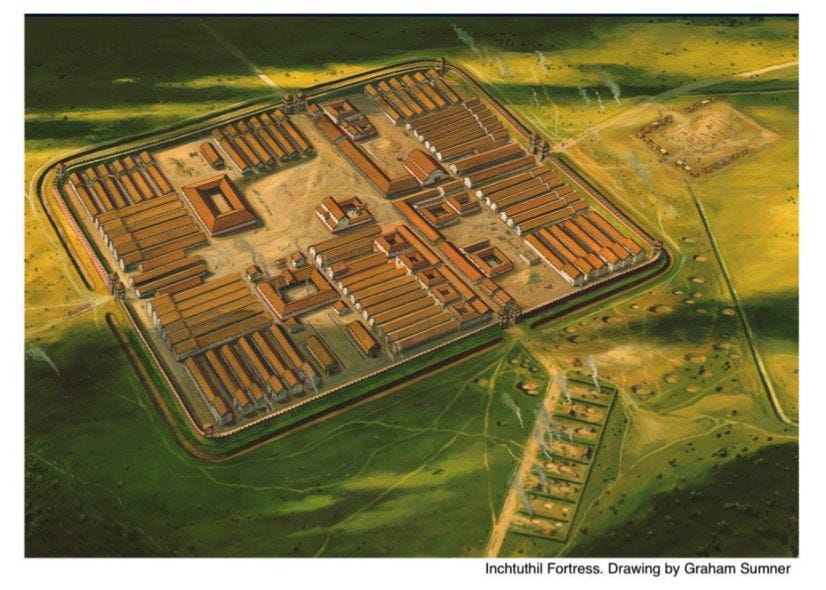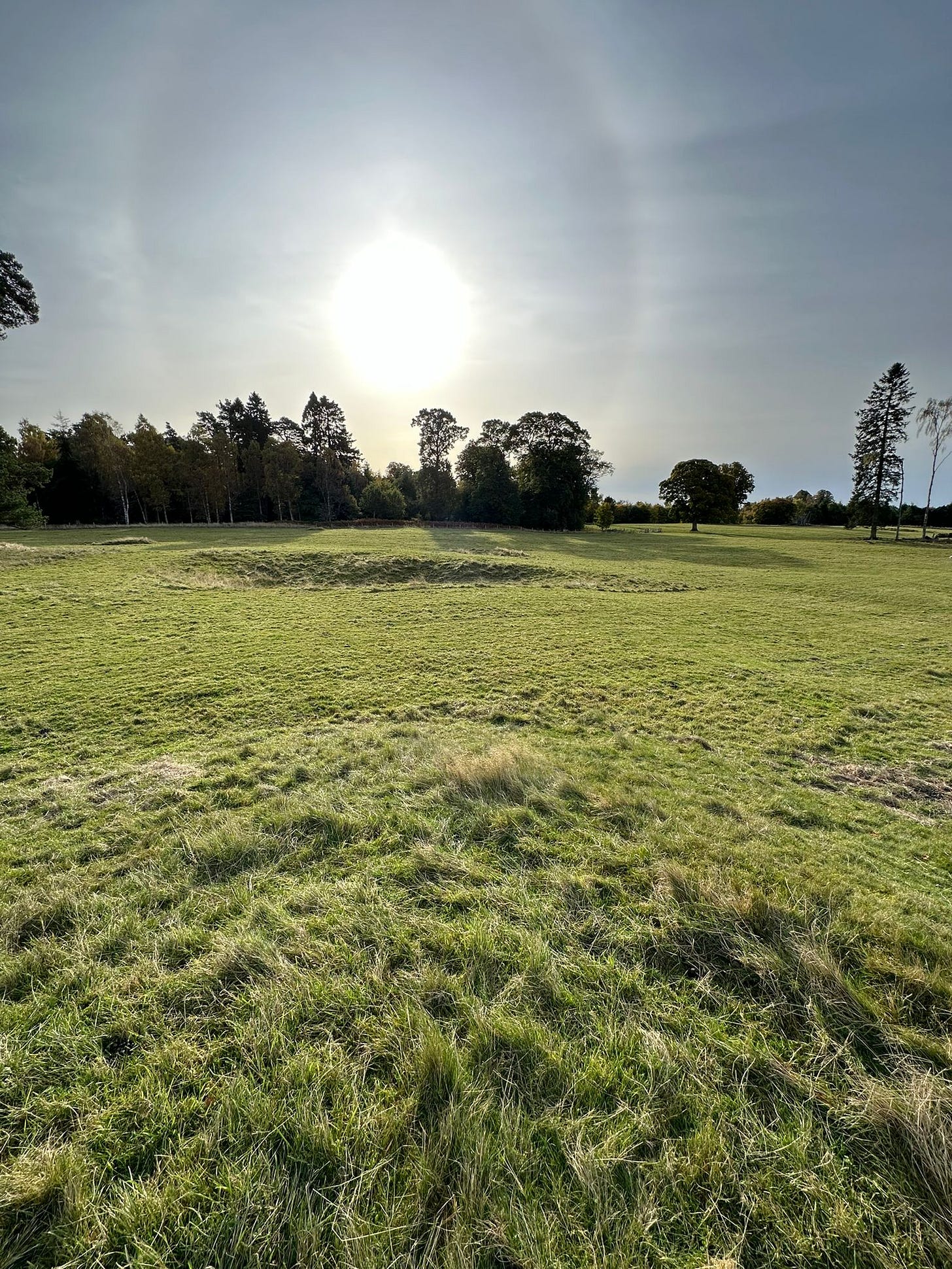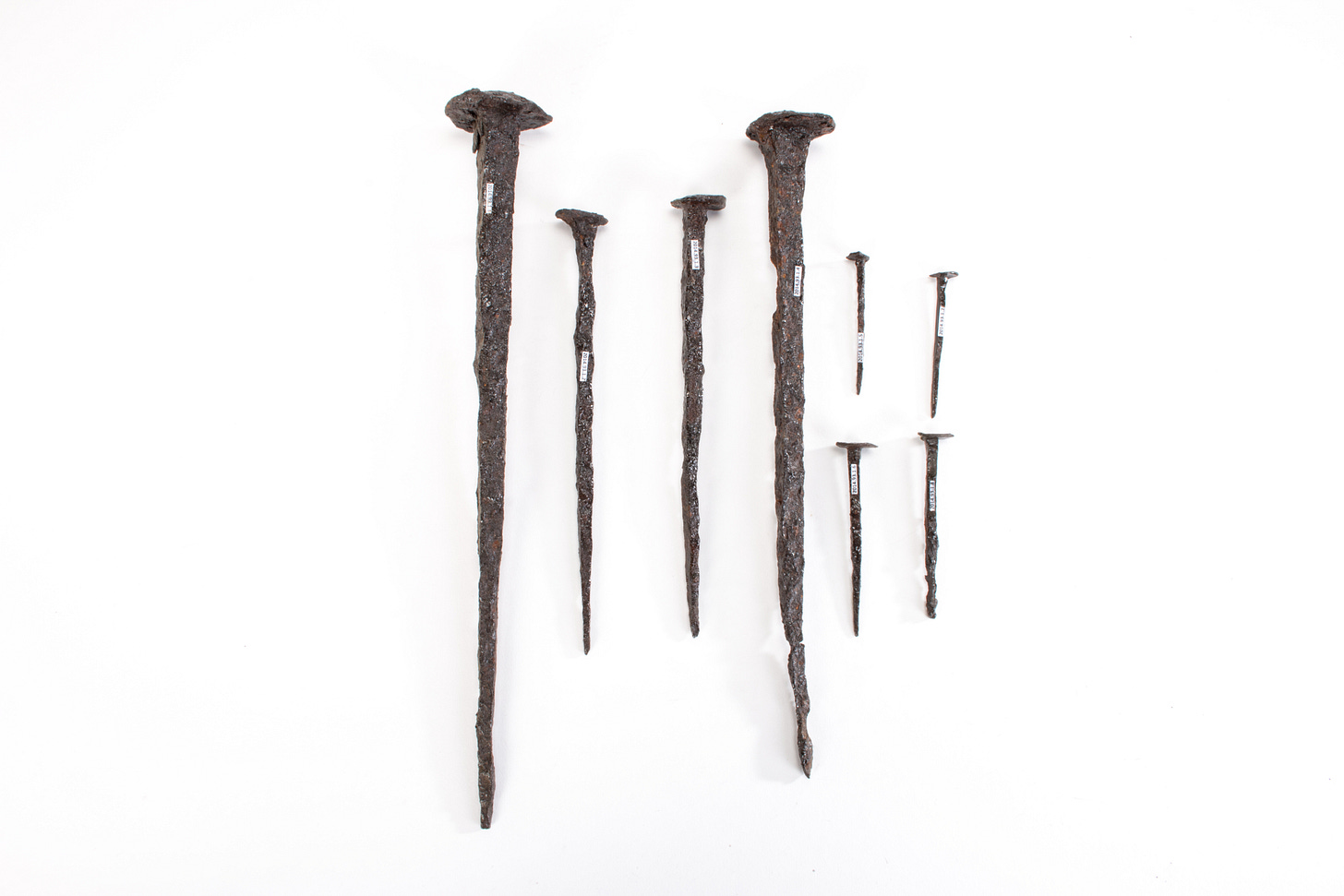The Roman fortress they built and quickly took down again
Inchtuthil was built to house thousands of fighting men - its remains offer the only complete plan of a legionary fortress in the Roman Empire. And then there's the story of the nails...
It started as a Saturday lunchtime conversation; by Sunday morning we were standing in a livestock field on a Perthshire farm, marvelling at mounds and long trenches that had survived since around 83AD, and wishing for a helicopter so we could get an aerial view of the outline of the Roman fortress of Inchtuthil, built for a legion 5,500 strong.
The site, with its deep foundations, pits and trenches still evident, now provides the only complete plan of a legionary fortress anywhere in the Roman empire.
On a sunny autumn day in 2024, the only eyes on us were those of curious sheep and distant cattle; warnings about the latter are affixed to the electric fence surrounding the field.
The Inchtuthil site is on private land – we were lucky to come across a friendly resident at the end of the private road to the site, who allowed us to park there and cautioned us about the cattle.
Ca canny for the coos
It’s a caution worth noting. Remember, some four to five people are killed by cows in the UK each year, with 74 fatal attacks reported since 2000. Bill Bryson knew what he was talking about in his warnings in Notes From A Small Island.
But distant cows aside, here we were standing in a field in the sunshine where Scotland’s only legionary fortress once stood.
Built to house the Legion XX, when they set off on a march from Inchtuthil, the head of the marching column would have been five miles up ahead, while the tail end was still at the fortress. It would, as noted on the excellent Blairgowrie & Rattray Heritage page, have been an impressive and terrifying site.

We had a rough idea of where we stood, just at the outskirts of the 53-acre fortress. The innocuous mound ahead of us when we clambered over the turnstile was once a grand entrance, one of four.
This remarkably well-planned fortress is also distinctive because it was abandoned almost as soon as it was built – in fact, before it was fully completed.
The departing legionnaires left nothing for the Caledonians (Scots) they were hoping to repel and subdue either. So much so that they buried nearly one million iron nails so their troublesome enemies could not use them to make weapons.
Romans in Scotland
The Romans invaded Britain around AD43, a four-legion task force lead by Aulus Plautius. By AD 71 they were likely making forays into Scotland – tree-ring dating shows a fort was established at Carlisle that year.
In AD77 Gnaeus Julius Agricola was appointed Consul and Governor of Britannia and, after clobbering tribes in north Wales and northern England, made his way into southern Scotland and reached the River Tay. He built his fort Trimontium (Newstead) near Melrose on the Scottish Borders around AD81.
Inchtuthil was intended as the advance headquarters for Agricola’s forces in their Caledonian campaign.
Set on a plateau above the Tay, its strategic importance meant forces could control movement between Highand and Lowland Scotland – and, if needs be, serve as a springboard for a further advance north.
The fortress itself was a masterpiece of orderly planning. At its heart lay its headquarters, where records were kept, as was money, and soul essentials like the military colours and religious icons.
Colonnades and underfloor heating
These were surrounded by barracks and accommodation built in scales of luxury according to status. The most elaborate housing, for the top centurion, had a colonnaded courtyard and underfloor heating.
Also included in the grid layout were six large granaries and a vast military hospital – clearly things were expected to get bloody in the Caledonian campaign.
Seven miles worth of wooden walls surrounded this fortress, which took two or three seasons (ie summer weather) to build. And then it all came to an abrupt end.
Even before the finishing touches were put in place, it was taken down again. This was due to the fact that one of the four Roman legions in Britain had to go off and fight somewhere else – reinforce the Danube frontier against Dacian invaders.
The ripple effect meant the repositioning of the other three legions and the Highlands fortress, and others further south, were abandoned. Inchtuthil was dismantled and valuables carted away; nother useful items were buried.
In the case of Inchtuthil, this meant the burying of nearly one million iron nails, which were discovered in a mound in 1960 during a careful excavation of the site which occurred from 1952 to 1965. You can read more about that, and life at the fortress, here.

As for the nails themselves, some went to museums around the world, and some were even sold to the public, for five shillings for one, or 25 shillings for a boxed set of five. And some were even used by atomic scientists to examine corrosion effects on barrels of nuclear waste.
Like most sites of Roman forts today, there is little to see at Inchtuthil now and you’d be better off going to a museum to see objects excavated from there.
Past and present wonders
Sometimes modern life seems disposable and disrespectful, as we pay little heed to heritage and the environment around us.
One of the many wonders of Scotland is the preservation of ancient history, the fact so many sites of various historic significance across many eras and ages are still evident or acknowledged. It’s truly something to treasure, and it’s all around us.
And so we drove home, the young lad and I, marvelling at the sunshine setting the autumn leaves ablaze and at our great good fortune to be living in this beautiful land with so many stories to tell.






